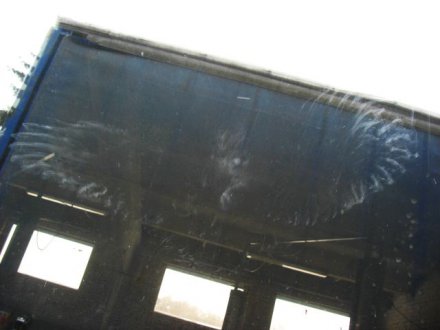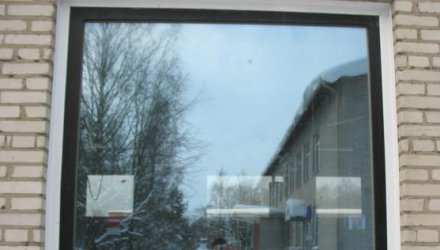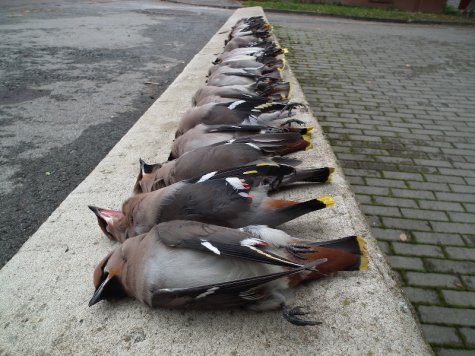Save birds from flying into windows
Text and photos Vello Keppart
Translation: Liis
Large windows and glassed areas that mirror the landscape outside are used increasingly in building. Fast-flyings bird cannot see the glass and as a result of the collision they get concussions, are injured or killed. Examination of birds killed in cities show that there is often a haemorrhage beneath the skull, more seldom injuries to air sacs or other organs.
Illustration 1. Birds are misled both by the reflexions in the window and the light from windows seen through the building

Illustration 2.“Angel pattern” with a wing span of 91 cm on the window points to collision of a crow-sized bird with the window
The light pollution from cities and high-rise buildings interferes with the migration of birds and attracts moths and other insects into the light trap. Only bats occasionally make use of the bands of light to feed on insects.
Measures and recommendations already at the building stage to prevent the death of animals are described in the source below.
Recommended reading: Schmid, H., Waldburger, P., Heynen, D. (2008). Vogelfreundliches Bauen mit Glas und Licht. Schweizerische Vogelwarte, Sempach.
Available at http://www.windowcollisions.info/public/leitfaden-voegel-und-glas_dt.pdf (in German)
Available at http://www.windowcollisions.info/public/leitfaden-voegel-und-glas_dt.pdf (in German)
Text: EOÜ
Last weekend reports came from several places all over Estonia about waxwings that had flown into windows and been killed. The explanation is that waxwings and many other bird species don’t perceive the glass as an obstacle. The birds are mislead by the sky and trees reflected in the glass and also by windows visible across the room.
The Estonian Ornithological Society appeals for glassed areas to be made better visible to birds in buildings where these accidents happen now and every year.
It is a great help if at least during the bird migration some visible objects are attached to potentially dangerous glass areas, such as snowflakes or elves cut in paper or maple leaves glued to the window; strips of masking tape or coloured sticky notes paper may be enough. In the case of corner windows or windows visible across a room it helps to pull the curtain of one half. The risk of collisions for birds can be reduced already at the location of the buildings and planning of the surroundings and by architectural solutions. A special window glass reflecting ultraviolet light has for instance been invented; it is visible to birds.
That birds fly against the glassed areas of buildings unfortunately happens very frequently during the migration period. In particular it is a problem on higher floors and with corner windows or windows visible across a room. Most often the collisions with glass surfaces occur in the active migration paths of birds, near main feeding places (for instance rowans, apple trees and other trees) or also near the winter bird feeders. At best it ends up with a concussion to the bird and it revives, in worse cases serious injuries follow or instant death.
Waxwings nest north and northeast of us and in Estonia they are annual passing migrants and winterers. This year the pretty birds with a crest have an invasion year meaning that they arrive in numbers tens of times larger than usual in Estonia.
Photo Aarne Tuule. Waxwings that have flown into window glasses in Tallinn on the weekend.
Information can be sent to:
Aarne Tuule










